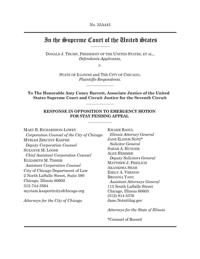Across Asia, chefs reshape global dining through the recipes they grew up with. Their influence has turned the region into a major force in culinary innovation, driven by a growing appetite for authentic, experience-led dining highlighted in Marriott International’s Future of Food 2026 report.

From Singapore’s hawker stalls to Vietnam’s new Michelin-starred restaurants, chefs are connecting tradition with modern skill. Their influence now extends far beyond their home kitchens, carrying Asia’s regional flavors to tables around the world.
Tradition evolves through new chefs
A new wave of chefs trained in top kitchens worldwide is blending modern techniques with family recipes. Marriott International’s Future of Food 2026 report calls Asia “the world’s most exciting kitchen,” crediting this talent with leading a new generation of culinary innovation.
While earlier generations of restaurateurs focused on preserving tradition abroad, today’s chefs build on the flavors they grew up with, merging global techniques with local tradition. Their influence now spans from fine-dining restaurants to street stalls, where experimentation and cultural pride define what’s next.
New voices in Asian gastronomy
Chef Pichaya “Pam” Soontornyanakij of Potong in Bangkok, named The World’s Best Female Chef 2025, trained in New York and draws on her Thai-Chinese background to blend fine-dining technique with the flavors of her heritage. Her menu balances tradition with the precision she developed in top kitchens abroad.
Soontornyanakij builds on traditional methods her family has practiced for generations, including fermentation, steaming, drying and slow roasting. “What I try to do is not replace them but reframe them,” she says. “I study their original use and then find ways to refine them with modern precision.” Her dishes remain centered in Thai culture while showing the creativity of the next generation.
In Melbourne, Brunei-born Chef Victor Liong of Lee Ho Fook takes a similar approach, blending familiar Chinese flavors with contemporary technique. “There will always be a customer who says a dish tastes nothing like their grandma’s food,” he says. “Alas, I’m not your grandma.” With Liong and Soontornyanakij leading the way, chefs are reinterpreting heritage through a modern lens.
Heritage and native ingredients
Throughout Southeast Asia, chefs are rediscovering regional ingredients once overlooked. At restaurants like Nén Danang in Vietnam and Samrub Samrub in Thailand, foraged herbs and local produce reveal deep ties between flavor and heritage.
In Kuala Lumpur, Chef Darren Teoh of Dewakan works with Malaysia’s native ingredients such as kulim, a nut with a garlicky scent; bunga kantan, or torch ginger flower; and ketumpang air, a wild medicinal herb. He brings these traditional elements into modern dining while preserving their cultural roots.
Filipino-born, Singapore-based Chef Joanne Siy, named Asia’s Best Female Chef 2023, says this shift marks the next era of cooking. “With the uncertainties of the world, there’ll be a desire to seek comfort and grounding from one’s heritage,” she says, noting the growing use of essentials like fish sauce, vinegars, misos, rempas, sambals, pickles and ferments.
Street food reinvention
Young chefs are reimagining Asian street food, bringing creativity and personal flair to stalls once known for longstanding recipes. In Singapore, a generation of Gen Z “hawkerpreneurs,” entrepreneurs who run or reinvent traditional hawker stalls, is redefining what local comfort food can be.
Nasi lemak, the coconut rice dish widely regarded as Singapore’s national staple, now appears in inventive versions such as a lemongrass and pandan risotto or paired with ayam taliwang, a spicy Indonesian grilled chicken. Some vendors cook it over charcoal and wrap it in banana leaves, while others serve a compact nasi lemak bun for diners on the go.
Traveler behavior in food tourism
A survey across the Asia Pacific shows that about 57% of guests now choose local Asian cuisine over international fare, with 75% discovering new dining spots online. Visually striking, Instagram-worthy dishes often attract attention, and personal recommendations from chefs and staff remain equally influential. Together, these preferences point to a dining culture shaped by visual appeal, identity and accessibility.
Emerging food destinations
New culinary centers are emerging across Asia. In Vietnam, the debut of the Michelin Guide recognizing 181 restaurants has brought global attention, while chefs such as Singapore’s Chris Fong of Oryz Saigon combine modern technique with local ingredients.
In Indonesia, initiatives like Wonderful Indonesia Gourmet and Indonesia Restaurant Week connect food with heritage tourism. Research at sites such as Muaro Jambi continues to uncover long-forgotten ingredients and methods.
The Philippines follows with its first Michelin Guide set for 2026, alongside events such as Terra Madre Slow Food, which promote regional products. Travelers are also venturing into China’s rising culinary cities such as Chengdu, Hangzhou and Chongqing, where investment and local pride are shaping distinctive regional food identities.
Conscious dining culture
Sustainability is redefining Asia’s hospitality industry as chefs work with small farmers and social enterprises to source locally and responsibly. These collaborations preserve traditional food systems, support communities and reduce environmental impact. Major hotel groups are following suit, creating a dining culture that responds to travelers’ growing interest in authenticity and environmental care.
New era for Asian dining
Asia’s chefs are leading a culinary renaissance that places the region at the forefront of global dining. Their work blends heritage, creativity and responsibility into a movement shaped by identity and innovation. For travelers, each meal provides a taste of Asia’s resilience and a connection to its evolving story.
Mandy Applegate is the creator behind Splash of Taste and seven other high-profile food and travel blogs. She’s also the co-founder of Food Drink Life Inc., a unique and highly rewarding collaborative blogger project. Her articles appear frequently on major online news sites, and she always has her eyes open to spot the next big trend.
The post A new generation of chefs puts Asia on every food map appeared first on Food Drink Life.













(0) comments
Welcome to the discussion.
Log In
Keep it Clean. Please avoid obscene, vulgar, lewd, racist or sexually-oriented language.
PLEASE TURN OFF YOUR CAPS LOCK.
Don't Threaten. Threats of harming another person will not be tolerated.
Be Truthful. Don't knowingly lie about anyone or anything.
Be Nice. No racism, sexism or any sort of -ism that is degrading to another person.
Be Proactive. Use the 'Report' link on each comment to let us know of abusive posts.
Share with Us. We'd love to hear eyewitness accounts, the history behind an article.